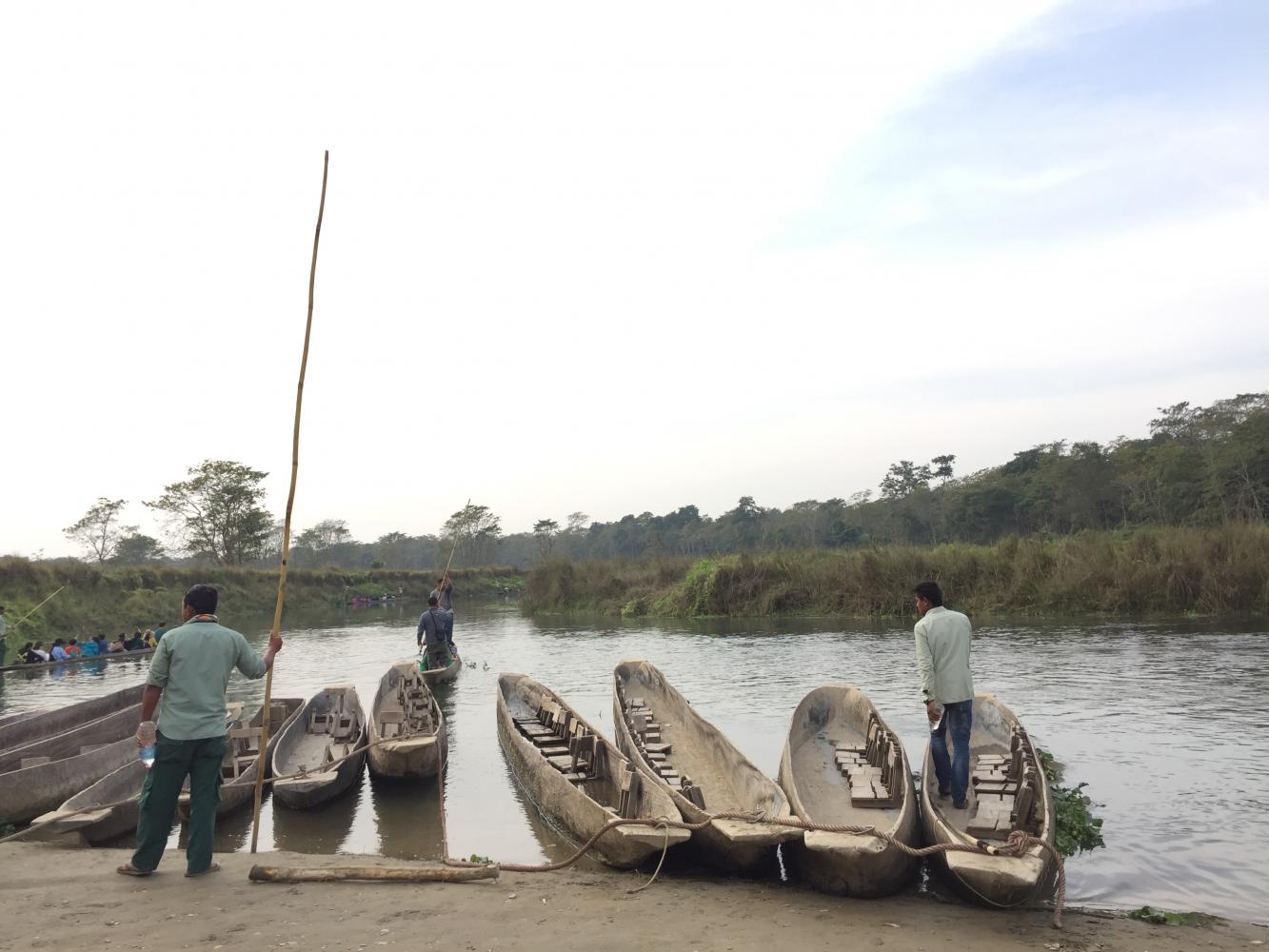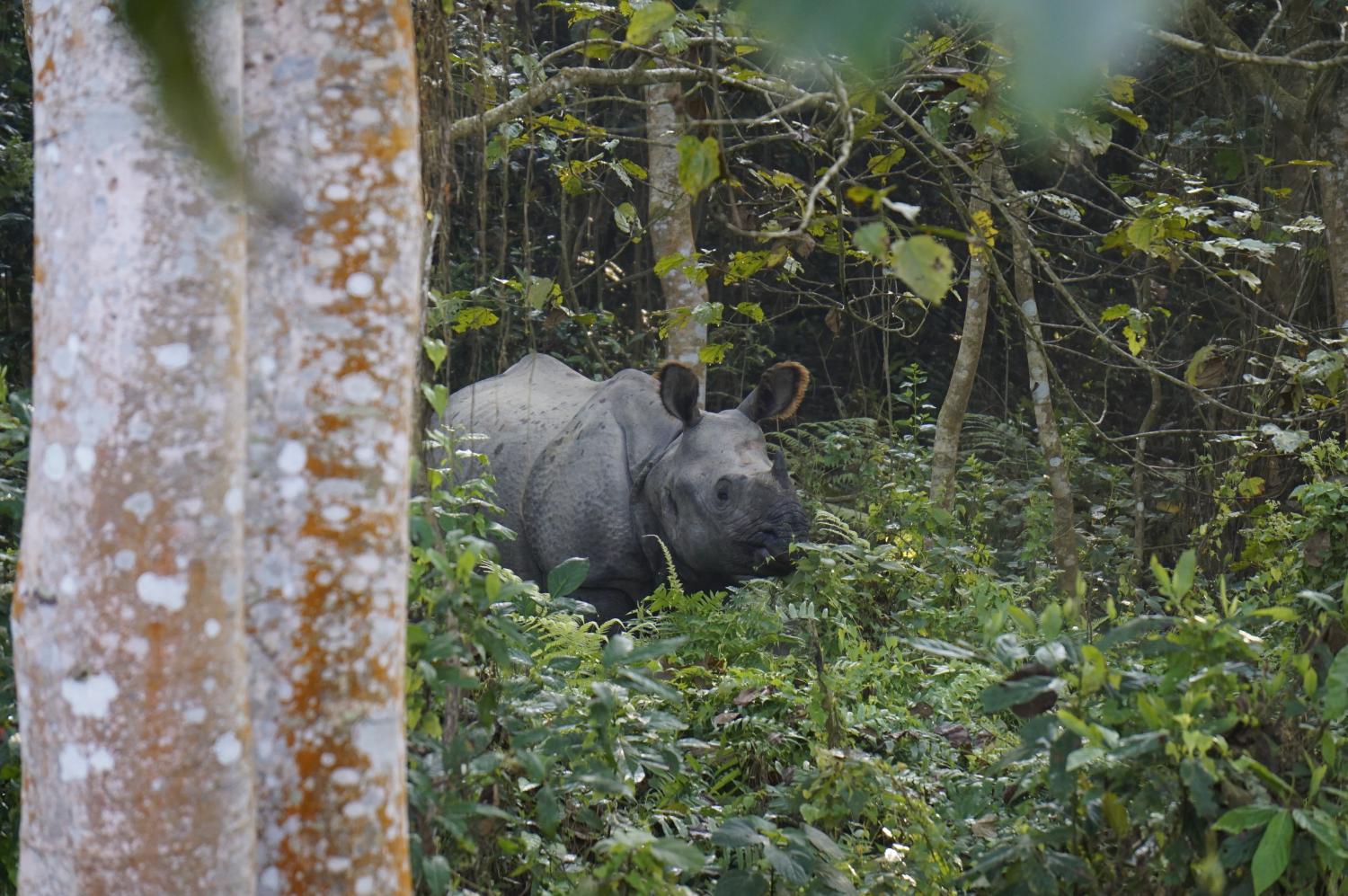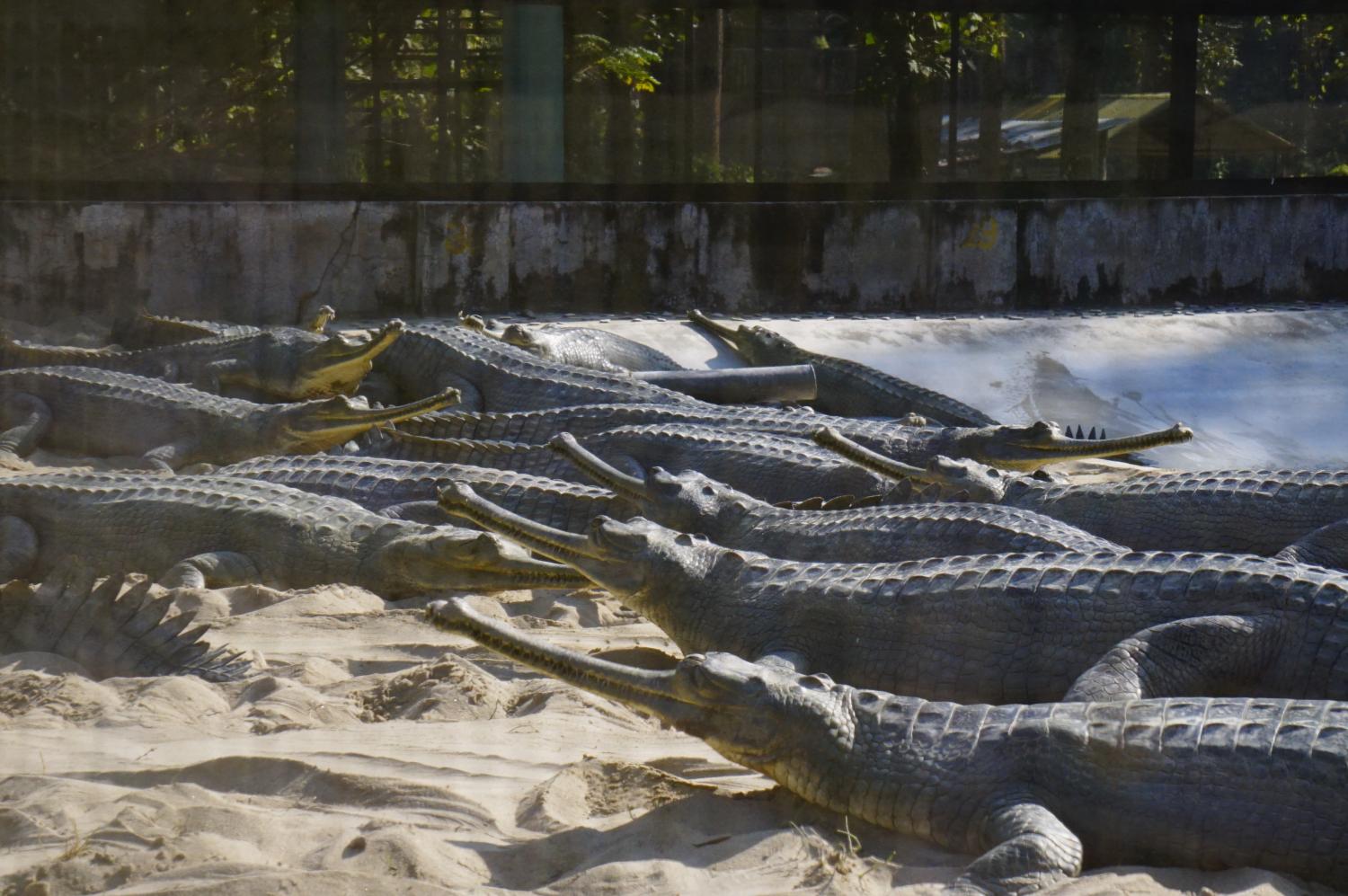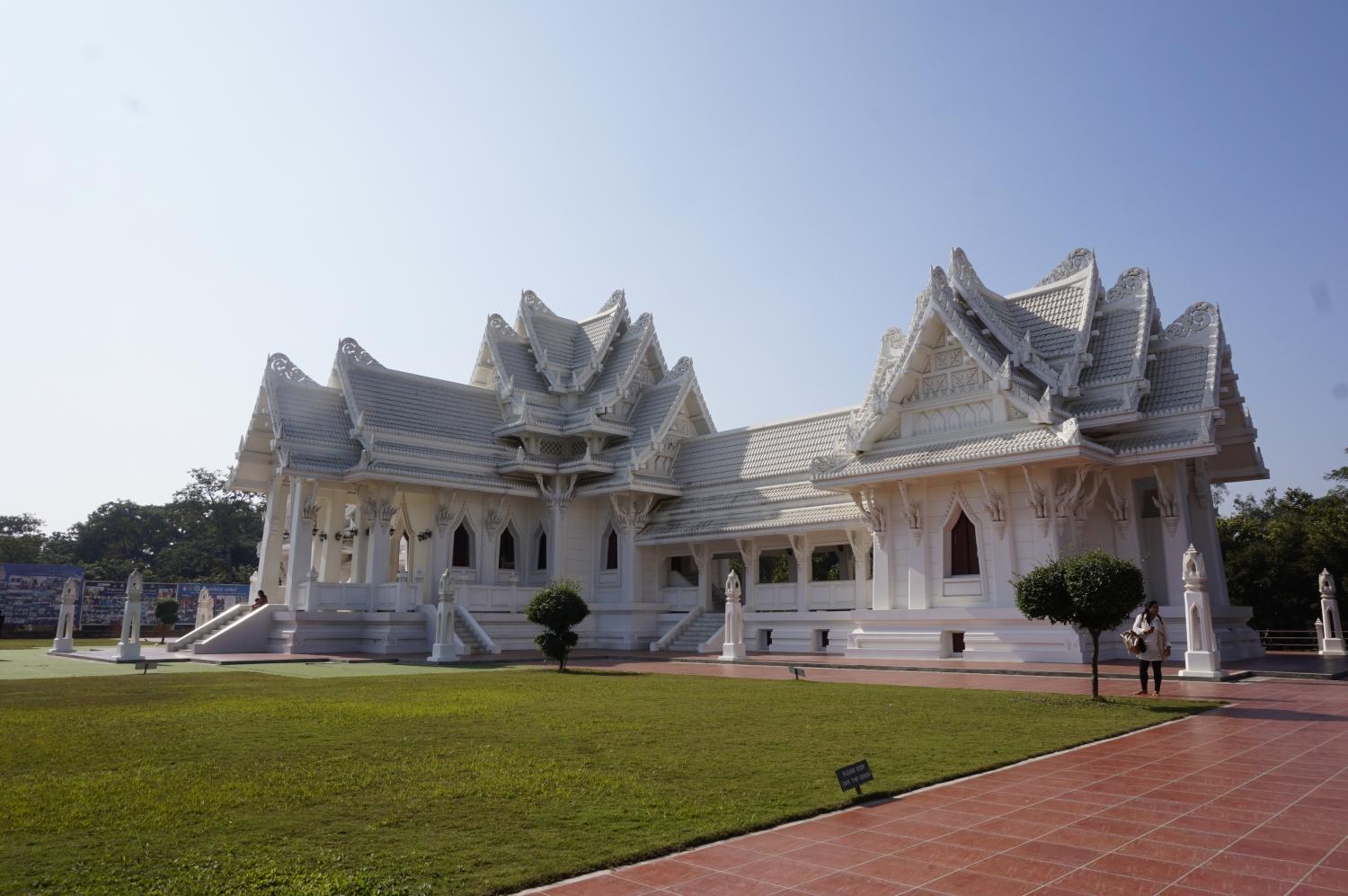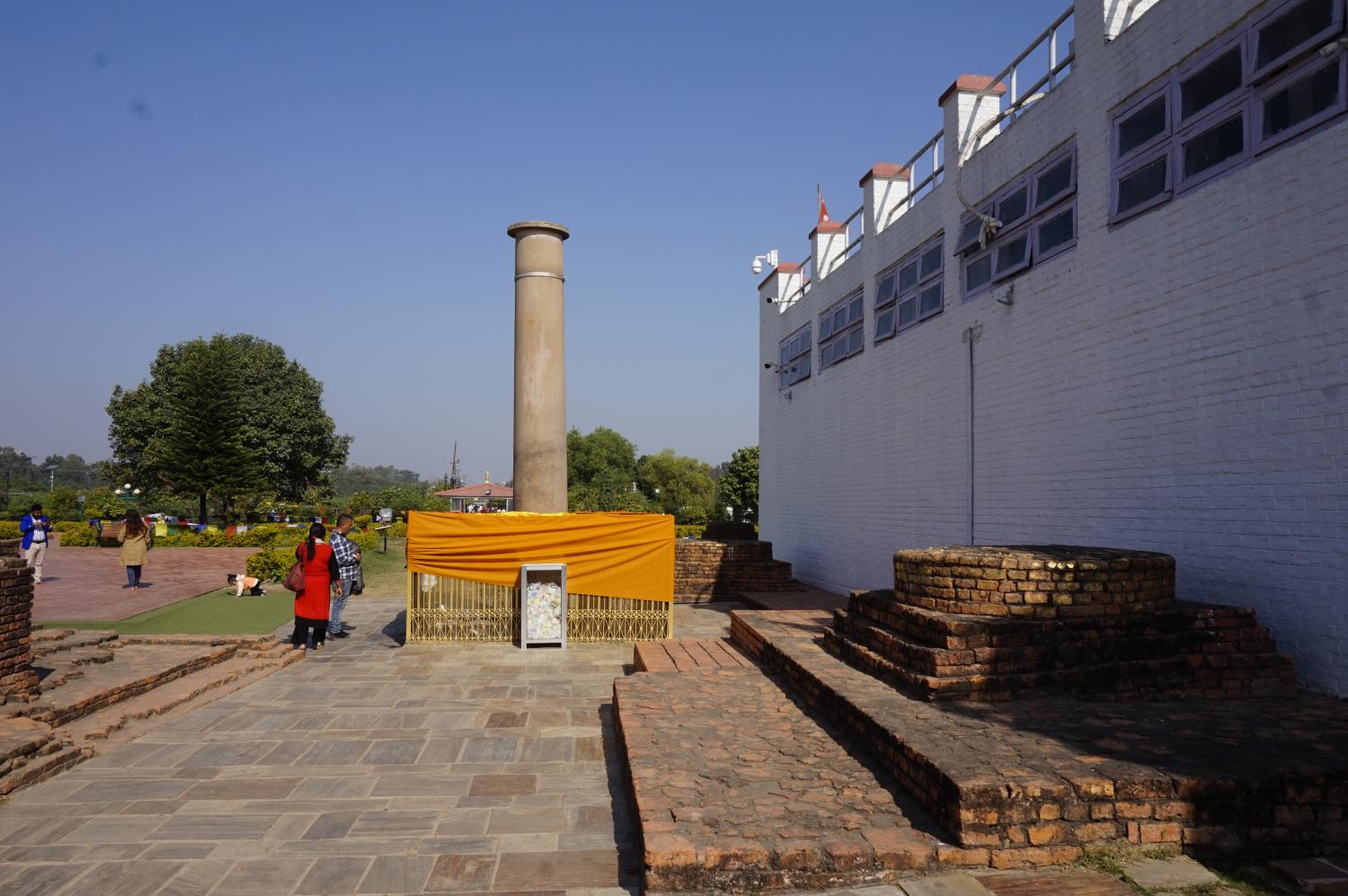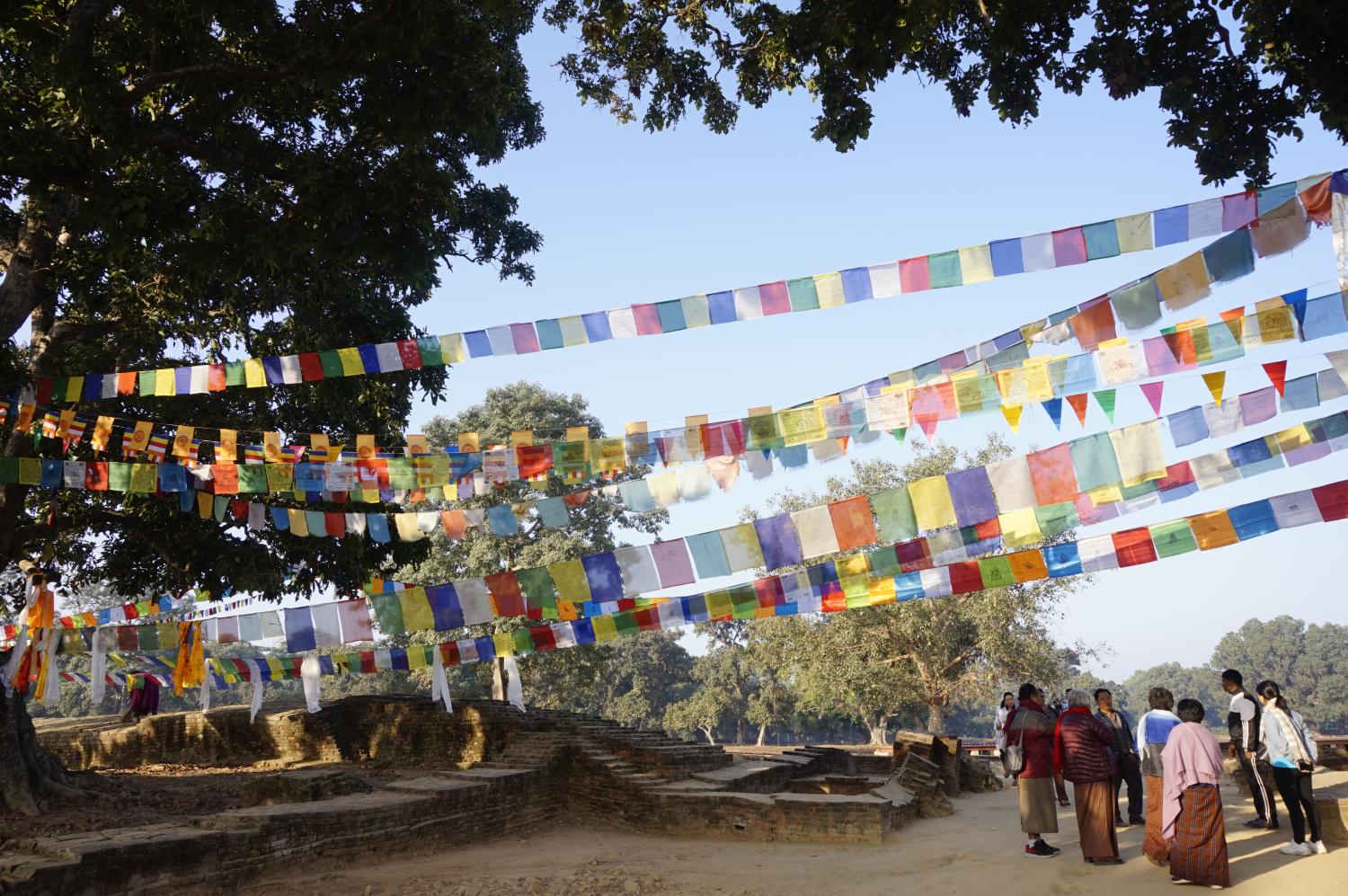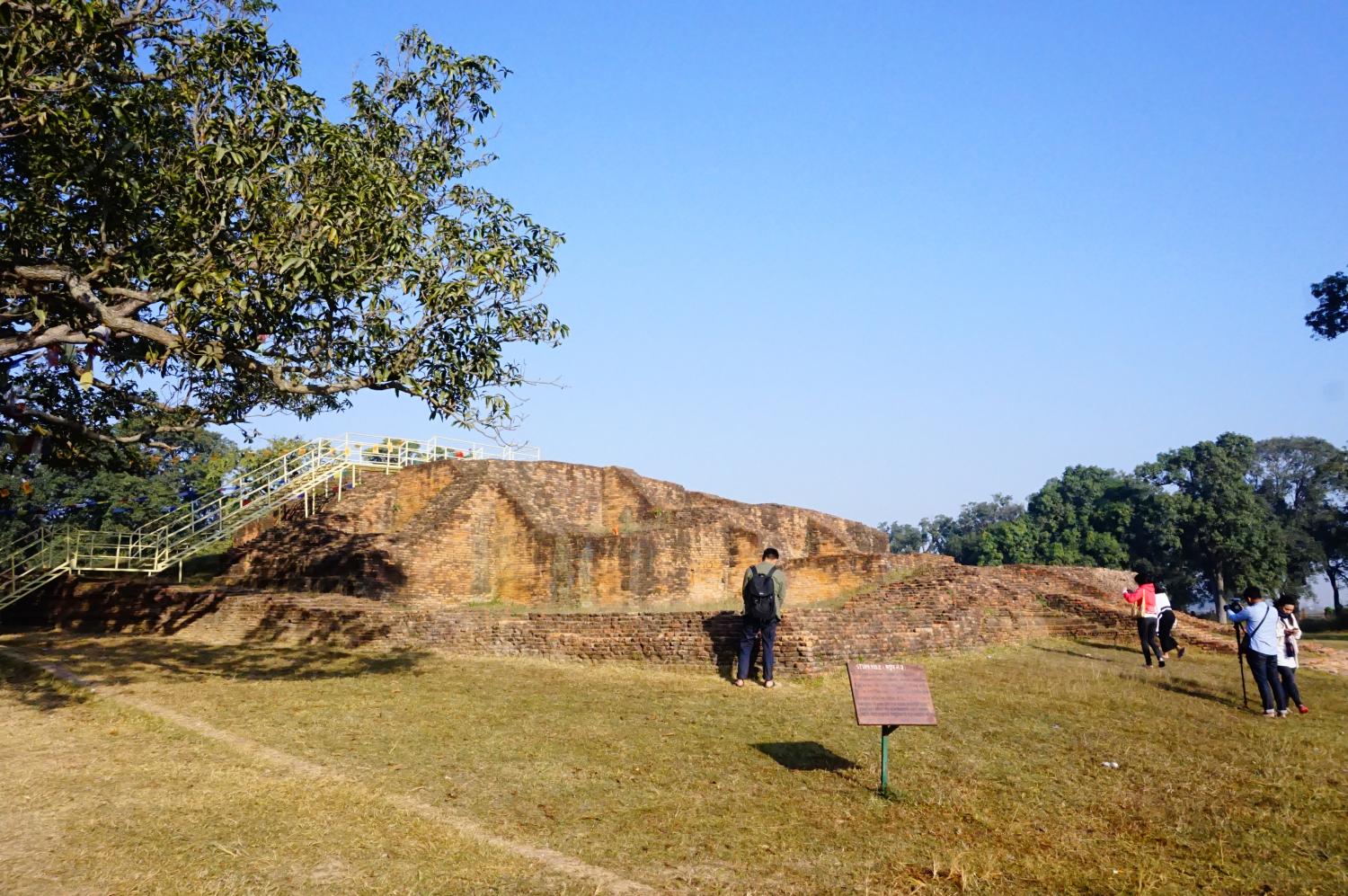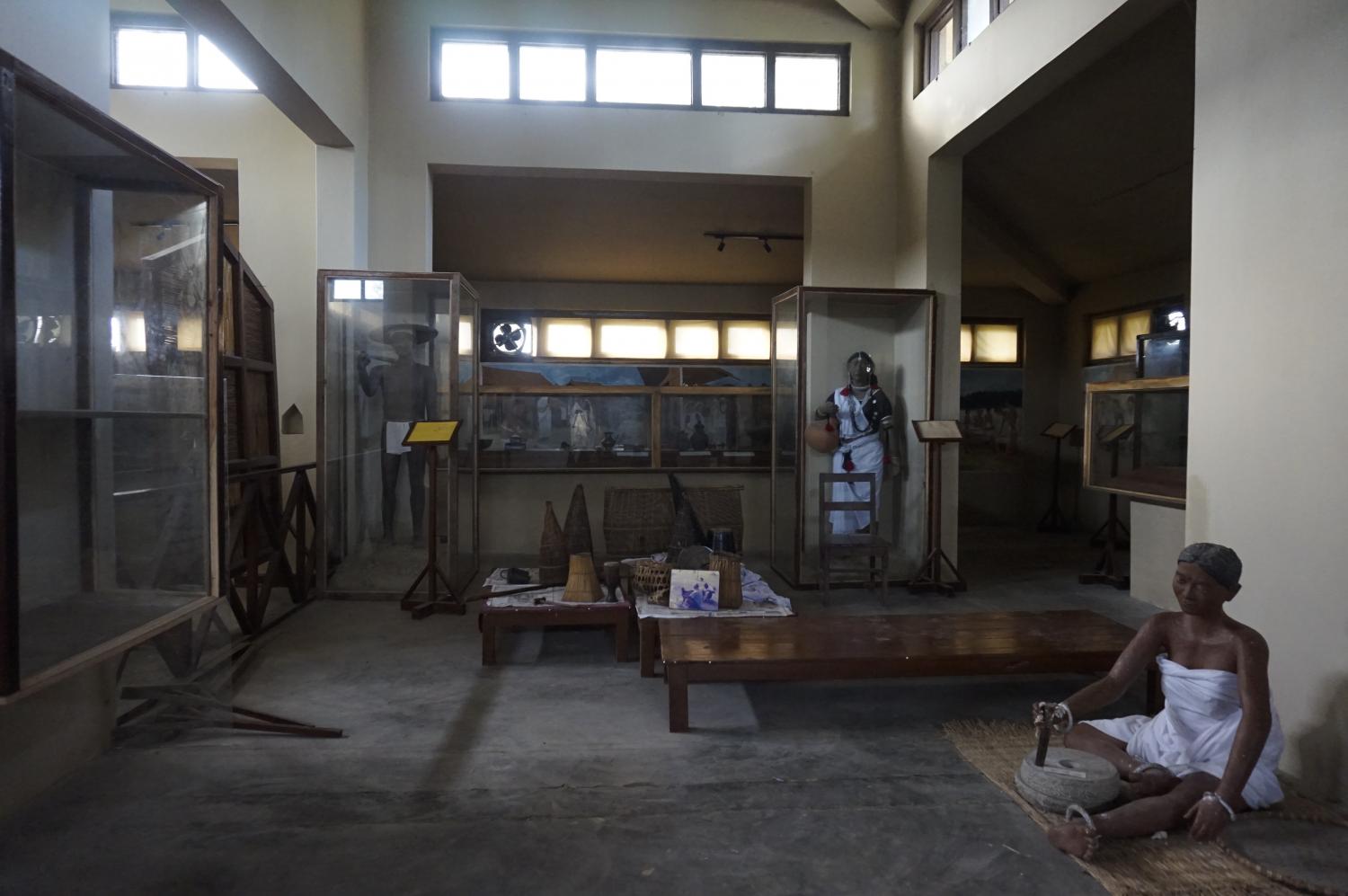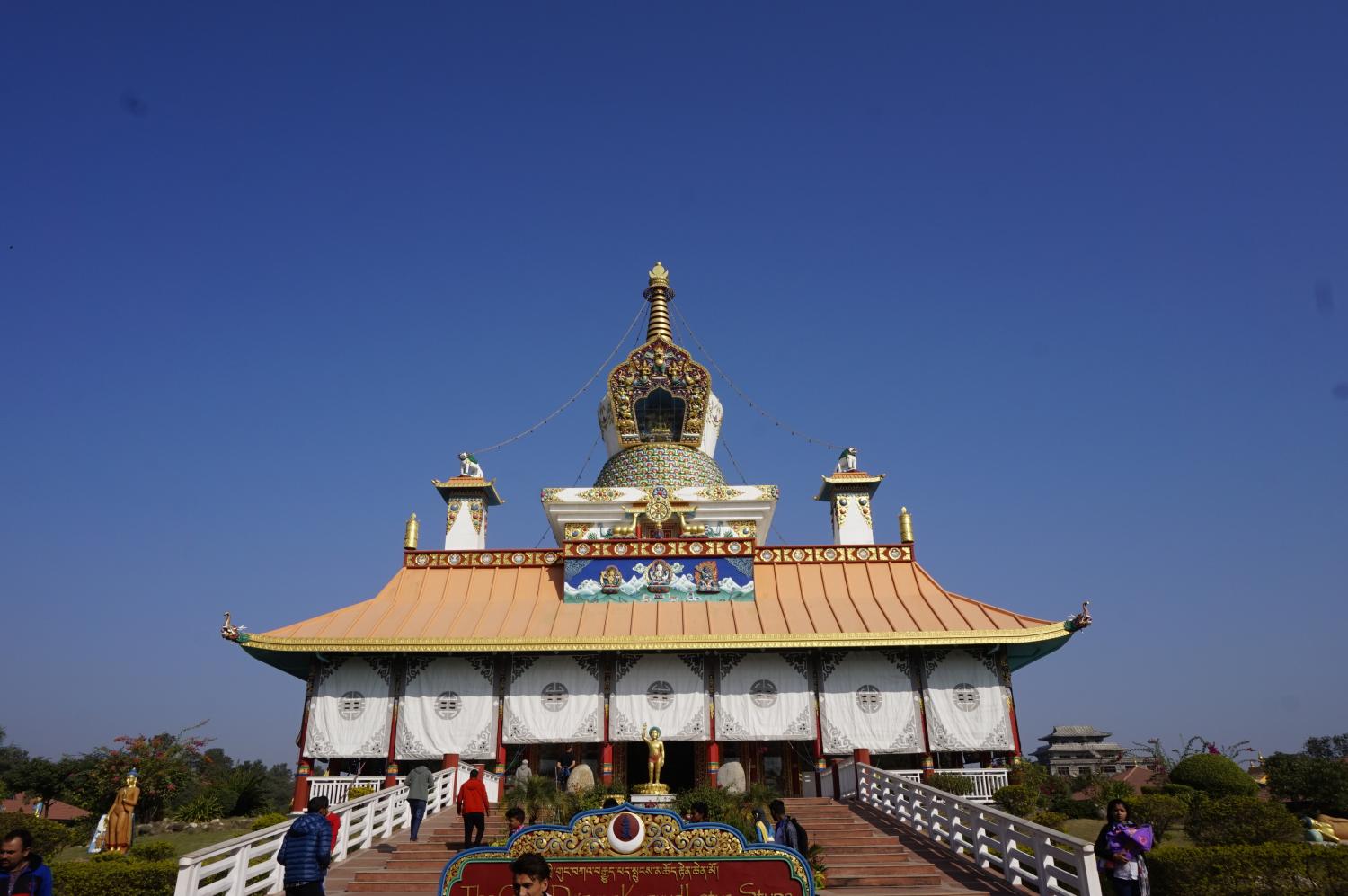Leaving the popular resort town of Pokhara in late afternoon, our van wove its way through the sprawling hillside roads heading to Chitwan, the lowlands in south central Nepal.
During a four-hour drive, I dreamed of being a treasure hunter on a forthcoming safari trip, but the sound of horns woke me up to find that we were stuck in traffic due to a road accident. The sky was getting dark and the narrow streets were full of twists and turns, with hundreds of container trucks travelling from India to Lumbini and Kathmandu.
As stomachs started roaring, our chauffeur showed off driving skills that made us feel we were in the race wars of The Fast And The Furious. We reached the Hotel Jungle Crown just in time for our dinner buffet.
We arose early in the morning, ready for a four-hour game drive around Chitwan National Park. Famous for its diverse biological systems, it was once a private game reserve for royal families, Rana rulers and their guests before being listed as a Unesco World Heritage Site in 1984.
Embraced by the Rapti and Narayani rivers, our guide Resham Rimal stood by at the pier and provided a boat to transport us to the park in a heartbeat. With the cool breeze, this ought to be a relaxing jaunt, but we caught our breath once we spotted some crocodiles basking just a few metres away from us.
Swapping to a four-wheel drive vehicle, this 60km park is considered the best spot to watch greater one-horned rhinos, royal Bengal tigers and gharial crocodiles, making it popular with adventurers from China, America, the UK and Europe.
Staring out of the window, we caught sight of a one-horned rhino seeking food behind the bushes, some deer roaming around and a group of black-faced langurs flying from tree to tree. The park is home to more than 60 species of beast, 56 species of reptile and 126 species of fish.
"Seventy percent of the park is covered with the Sal forest and 20% is the grassland. Here, it's like a sanctuary of 605 one-horned rhinos using ID-based rhino-monitoring to track them and their movements," Resham said.
"Rhinos can be identified based on morphology such as age, sex, body marks and horn structure. A database shows their details, photos and GPS location."
The government plans to conduct a rhino census next month, after the Department of National Parks and Wildlife Conservation (DNPWC) found 645 rhinos in Chitwan, Parsa, Bardiya and Shuklaphanta National Parks in 2015.
We took a break at the Gharial Conservation Breeding Center that sits in the middle of the park. It was initiated in 1978 by the collective efforts of the Nepal government, Frankfurt Zoological Society and World Wildlife Fund Nepal to protect reptiles from extinction.
To conduct research on their lifecycle, the centre has collected gharials' eggs from the riverbanks and spent 65-90 days incubating them in natural conditions. The baby gharials will hatch during the monsoonal month of June and will be raised in more than 10 ponds until they reach 1.5m. Aged six-to-eight years, gharials will be released to the Rapti, Narayani, Kaligandanki, Koshi, Karnali and Babai rivers.
The park also boasts more than 850 species of bird, making it a paradise for birdwatchers. From riverbanks to treetops, we spotted crested kingfisher, common hoopoe, lesser coucal, purple swamphen, yellow-wattled lapwing, grey-headed fish eagle, darter, great egret, Indian pond heron, black-hooded oriole, lesser racket-tailed drongo, black-crested bulbul and ruddy shelduck. The sunshine spread out but wildlife still slept in. Our safari trip came to an end without saying so-long to the Bengal tiger families.
After replenishing our energy with lunch, we returned to the national park this time for a thrilling canoe ride along the Rapti River. Our cruising companions were a big group of Chinese tourists keeping themselves in silence while admiring natural beauty.
Jumping up to a traditional Nepalese wood boat with a capacity to carry up to 15 people, our expedition was floating in line as a mahout rode an elephant to chase a rhino away from the stream.
Without life vests, we learned how to keep the boat balanced while capturing photos of beautiful peacocks that swaggered around the sandbank. Once again, we almost stopped breathing when we spotted a lot of chunky marsha mugger crocodiles lounging on the sand decks and some swimming alongside us.
At this point, we became concerned about safety and asked Resham: "Are you sure that crocodiles won't attack us?" He said crocodiles catch their prey on land, then drag it into the water. So, you won't see crocodiles swallow their food while swimming. And if a boat capsizes and sinks into the water, you just swim to the bank.
We continued to learn about wildlife and local plants during a pleasant one-hour trek. Shady and verdant, the 1.5km trail showcased giant termite mounds, rhino apple trees (false white teak) and a towering 150-year-old sal tree.
"Local villagers have used sal trees to build bridges and railroad ties, while their leaves are transformed into plates for the Hindu rituals," our guide explained.
Walking through the bushland, Resham demonstrated how to trace deer from the piles of dung they left on the ground and took us to observe how a giant rhino seeks food in a swamp.
Before sundown, we reached the Elephant Breeding Center in the Sauraha village, home to a big herd of domesticated pachyderms that were once trapped and can't be released back to nature. Established in 1985, the centre aims to protect the endangered elephants in the region and educate people about wildlife conservation. Here, visitors can learn how to prepare a meal for elephants and observe their routines.
Not far from the elephant camp, the Biodiversity Conservation Center is a playground for local students and families to learn about the endangered royal Bengal tigers and other wild animals in Nepal.
In the early 1970s, the Nepal government teamed up with the Smithsonian Institution, the World Wildlife Fund and the Department of National Parks and Wildlife Conservation to launch the Tiger Ecology Project in Chitwan National Park. Then the project expanded its mission to study the ecology of greater one-horned rhinos before being upgraded to the conservation centre.
On view is a wide collection of taxidermy, ranging from king cobras, large-toothed ferret badgers, fish and insects to elephant and gharial crocodile foetuses. Visitors can also learn how the camera-trapping technique can be used to monitor the population of tigers in the national parks.
Next morning, we dropped by the Tharu Cultural Museum to learn more about the natives. Surrounded with extensive yellow mustard fields, it's designed to resemble a clay house with colourfully painted walls to take visitors back to the history of the Tharu ethnic group.
There's a display of ancient agricultural tools, local costumes, musical instruments used in rituals, and kitchenware, with a collection of black-and-white photographs depicting foreigners and local villagers hunting tigers, crocodiles and leopards in the past.
"Tharu villagers have lived here on the flatlands for more than 100 years. They used elephant bamboo grass and mud to build their houses. They were famous for making baskets, which younger generations changed to use plastic or other materials. They set up this museum to pay homage to their ancestors and tell the history of Tharu communities," Resham said.
Leaving the forest, we continued to explore the birthplace of Lord Buddha in the southern town of Lumbini. Located 123km from Chitwan, the venerable Mayadevi Temple stands on the site that once was Lumbini Garden.
Restored and reopened in 2003 by the Lumbini Development Trust, the compound houses stupa ruins, meeting halls and viharas that reflect the different phases of its construction in past centuries.
According to the Buddhist scriptures, Maya Devi -- queen of the Kapilavastu kingdom -- passed through Lumbini Garden and took a bath in the Puskarini (Sacred Pond) before she gave birth to Prince Siddhartha under a bodhi tree.
Crowded with thousands of Buddhist pilgrims every day, the highlights include the Asoka Pillar that Emperor Asoka created as a tribute to Lord Buddha dating back to 249 BC, and a sacred pond that was remodelled by Keshar Shumsher JBR between 1933 and 1939. The sandstone-based Marker Stone is installed in a main hall to indicate the exact location where Prince Siddhartha was born.
Situated in the East Monastic Zone, the Royal Thai Monastery Lumbini was erected in 1995 to commemorate the 50th anniversary of His Majesty King Bhumibol Adulyadej's accession to the throne. Covering 20 rai, it boasts a beautiful Thai-style ubosot designed by national artist Pinyo Suwankiri and provides accommodation and meals for groups of Thai pilgrims.
"We have initiated the charity project, through which Nepali and Thai ophthalmologists offer free treatments for those suffering from cataracts. This is the best way to interweave a sustainable relationship with local communities," said chief abbot Phrasribodhivides (Suphot).
Crossing to the West Monastic Zone, the Great Drigung Kagyud Lotus Stupa is a masterpiece of the German government. Constructed in 1998, it is famous for an astonishing Chinese-style stupa, with the walls showcasing fancy murals recounting the story of Lord Buddha.
On our last day in Lumbini, we headed west to the ancient capital Kapilavastu of the Sakya kingdom, the hometown of Prince Siddhartha. Situated 29km from Lumbini, this historical site is lined with the ruins of archaic walls, towering gates, brick buildings, terracotta figurines and other artefacts.
With a huge courtyard and many rooms, the ruined brick structure near the main northern entrance gate is reminiscent of a vihara, built over the wreck of the palace during the last phase of settlement. Visitors can also trace the footprints of Prince Siddhartha to the ruins of the Eastern gate, whence he departed from his palace before beginning his pilgrimage for enlightenment.
A stone's throw from downtown Kapilavastu, Kudan (Mango Garden) is home to three ancient stupas built to pay homage to Lord Buddha. Behind the entrance, the Rahul Stupa is believed to stand on the spot where Prince Rahul -- the son of Lord Buddha -- was ordained by chief disciple Sariputra. The second one was constructed where Lord Buddha taught his family members for the first time, and the last one was erected to commemorate Queen Prajapati offering a monk's robe to Lord Buddha, her husband.
Travel info
- Chitwan National Park's admission is 1,500 Nepalese rupees (400 baht) for foreigners and NR100 (27 baht) for locals.
- Find out more at chitwannationalpark.gov.np.

